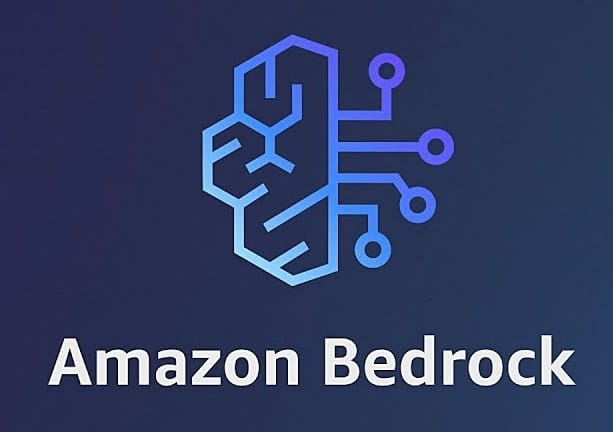How to Use AWS Bedrock or Claude for Real-Time Pipeline Triage Summaries

Bringing AI observability into CI/CD with Bedrock + Claude for instant insight, not just logs.
The problem: CI/CD is drowning us in logs
If you’ve ever been on-call for a CI/CD system, you know the pain.
A build fails at 2:17 a.m., PagerDuty goes off, and you open CloudWatch or GitHub Actions to find a 1,200-line log full of color-coded despair. Somewhere in that mess is the one line that actually matters.
Teams have gotten used to living like this. We keep adding dashboards, alerts, and retries; but triage is still manual and slow.
That’s the part AI can finally eliminate.
In 2025, tools like AWS Bedrock (powered by Anthropic Claude or Amazon Titan) can automatically read and summarize CI/CD logs in real time; not as a novelty, but as a serious reliability and velocity enhancer.
The vision: real-time pipeline intelligence
Imagine your Slack channel doesn’t just say:
“Prod Smoke failed on Shard 2”
…but follows it with a short, actionable summary:
Summary: Login test failed due to expired Cognito token; rerun likely to pass after token refresh.
* Affected module:auth-service
* Last passing commit:a19f03b
* Suggested action: Invalidate cache or rotate test secret.
That’s not fantasy. It’s just an intelligent layer between your CI/CD logs and your developers.
Let’s unpack how to build it; step by step.
Capture your logs in real time
First, stream your pipeline logs to a central bus.
- GitHub Actions: pipe test output into Firehose
pytest tests/dev -v | tee >(aws firehose put-record --delivery-stream-name ci-logs --data file:///dev/stdin)
- ECS / CodeBuild: use the
awslogsdriver to send to CloudWatch. - Kubernetes runners: forward with Fluent Bit or Vector.
All logs end up in S3 or a Kinesis stream with event notifications turned on. Each event triggers a Lambda, which will become your triage brain.
Trigger Bedrock or Claude to summarize
Each Lambda run receives:
- Build metadata (job name, branch, commit SHA)
- Log excerpt (error block or last N lines)
- Optional tags (
smoke,prod,performance, etc.)
Its goal: feed this context into Bedrock and return a concise triage summary.
import boto3, json
bedrock = boto3.client("bedrock-runtime")
prompt = f"""
You are an expert DevOps assistant.
Summarize this pipeline failure in one paragraph.
Identify root cause, affected service, and suggested next step.
Logs:
{log_excerpt}
"""
response = bedrock.invoke_model(
modelId="anthropic.claude-3-sonnet",
contentType="application/json",
accept="application/json",
body=json.dumps({"messages":[{"role":"user","content":prompt}]})
)
summary = json.loads(response['body'].read())["content"][0]["text"]
Stream the result where it matters
Once the summary is ready, push it straight into your team’s workflow:
- Slack notification:
{
"text": "*Pipeline Failure Summary:*",
"attachments": [{"color":"#E01E5A","text":summary}]
}
- CloudWatch metric: track “AI-classified root causes.”
- S3 + DynamoDB: store summaries for analytics.
Within seconds, your DevOps channel has human-readable insight; no scrolling through walls of logs.
Give the model real context
Claude and Titan are far more accurate when you give them context, not just snippets. Include:
- Test context: names, markers, shards, durations
- Git context: last 3 commit messages
- Environment info: dev vs prod, smoke vs regression
- Historical baseline: last successful run for the same test
Claude 3’s massive 200k-token window lets you feed entire multi-shard build histories and ask:
“Compare this failed run against the last successful one. Highlight what changed.”
That’s how you move from describing failures to diagnosing them.
Real-time vs batch summarization
You have two architectural options:
🔹 Real-time mode – stream logs continuously to Bedrock
- Immediate visibility
- Higher cost per invocation
🔹 Batch mode – summarize only after job completion
- Cheaper, more complete context
- 1–2 minute delay
Many teams run a hybrid: Claude for instant triage, Titan for post-run summaries.
Auto-classify failure patterns
Beyond summaries, you can have the model classify failures for pattern analytics.
Prompt example:
Classify the failure below into one of:
[Network, Auth, TestData, Timeout, Flaky, Infra, CodeRegression]
Explain why in one line.
Feed those labels into DynamoDB and visualize them in QuickSight:
| Failure Type | Frequency | Avg Duration | Hotspot Service |
|---|---|---|---|
| Auth | 18 % | 4.2 min | Cognito |
| Flaky | 31 % | 6.1 min | UI Smoke |
| Network | 12 % | 3.8 min | ECS Runner |
That’s AI-driven defect taxonomy; an observability layer for quality itself.
Why Bedrock beats direct Claude API
If you’re already on AWS, Bedrock integrates far cleaner than calling Claude directly.
| Feature | Bedrock | Claude API |
|---|---|---|
| Security | IAM roles, no API keys | API key management |
| Latency | In-region (us-east-1) | Internet round-trip |
| Billing | Native AWS invoice | Separate vendor |
| Integration | Works with Lambda, Kinesis, S3 | Custom wrappers |
| Model choice | Titan + Claude + Mistral + Llama | Claude only |
Bedrock also supports VPC endpoints and full audit logging; critical for enterprise governance.
Control cost and performance
AI inference is cheap until you over-trigger it. Optimize early:
- Summarize only failures - skip passing builds.
- Truncate smartly - feed only error blocks or last 1,000 lines.
- Deduplicate - hash log content and reuse identical summaries.
- Batch requests - group similar failures in one Bedrock call.
With basic hygiene, most teams stay under $200/month while triaging hundreds of builds; far less than one engineer-hour of manual log digging.
Culture shift: from “why did it fail?” to “what did we learn?”
AI triage doesn’t just save time; it changes behavior.
- Developers stop ignoring flaky builds because summaries make them clear.
- QA leads get weekly digests of patterns without opening Allure reports.
- Ops gain metrics tied to root causes, not just statuses.
- Executives finally see “why builds fail,” not just “how often.”
It’s the next phase of CI/CD observability; where AI becomes your first responder.
Close the feedback loop
The magic happens when you let engineers rate the summaries.
Every “✅ Correct” or “❌ Off-target” in Slack feeds into SageMaker Ground Truth, fine-tuning your Bedrock model.
After a few months, your AI doesn’t just summarize; it starts predicting:
“Shard 3 is likely to fail due to flakiness; rerun with fresh tokens.”
That’s not sci-fi. That’s self-triaging pipelines learning from history.
AI Doesn't Replace DevOps Engineers
Build failures are inevitable. Triage pain isn’t.
With Bedrock or Claude, every log line becomes a conversation, every failure a feedback loop, every build part of your system’s living memory.
AI doesn’t replace DevOps engineers; it amplifies them.
It’s the second brain that never sleeps, never misses a pattern, and never complains about reading logs at 2:17 a.m.
The future of CI/CD observability isn’t more dashboards.
It’s AI that reads your logs for you; and tells you what to fix before your coffee even brews.
👉 Want more posts like this? Subscribe and get the next one straight to your inbox. Subscribe to the Blog or Follow me on LinkedIn



Comments ()